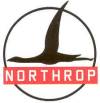
F-89J
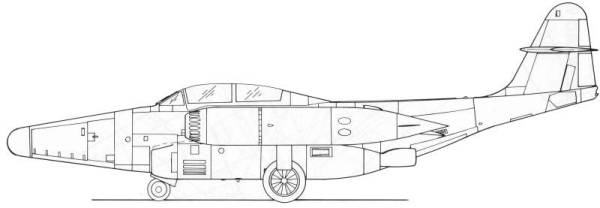
The
Northrop F-89 was the first
turbojet, all weather fighter-interceptor developed for the U.S.A.F.
Designed as a successor to the P-61 Black Widow, the F-89 established
new standards for air defense interceptors and served the the U.S.A.F.
and Air National Guard units for nearly 20 years. Powered by twin
Allison J-35 turbojet engines the Scorpion was an innovative creation
due to the unusual thin, straight wings that were utilized instead of
the accepted swept wing design. The broad wings endowed the F-89 with
excellent flight characteristics throughout the performance envelope
due the split decelerons that could be utilized as ailerons or
deployed
as speed brakes. It was operated by a two man crew composed of a pilot
and radar intercept officer who were seated in tandem in a pressurized
cockpit. The F-89D was the worlds most heavily armed fighter in the
mid-fifties. The most significant improvements in this variant were
the
wing tip mounted rocket pod/fuel tanks and sophisticated Hughes fire
control system. The forward section of each pod contained 52 2.75"
folding fin rockets that could be fired individually or in a lethal
salvo of 104 projectiles. The fuel tanks contained 300 gallons of fuel
per tank. 683 aircraft were built and an F-89D established aviation
history on July 19, 1957 when a test aircraft launched a nuclear
tipped
MB-1 Genie rocket. The continuing need for improved air defense with
long range strike capabilities mandated the the conversion of 350
F-89Ds to the definitive F-89J. The rocket pod/fuel tanks were
replaced
with 600 gallon fuel tanks and the wings were equipped with external
pylons armed with two MB-1 Genie nuclear tipped rockets and four GAR-2
Falcon guided missiles.
The Kit
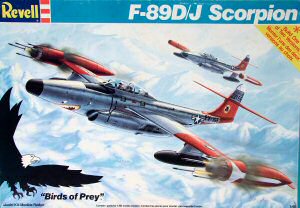
This kit was purchased second hand and as such did not include the original box so I had to locate an image of one on the net. I don't know if my kit is the same issue as the box but the kit is none the less the same. This kit was originally released in the 90's and as such has raised panel lines and other details that were common at the time. The release I have is marked 1990 on the bottom of one wing. I'm assuming, since the kit I have was still in sealed bags, that it came from the factory that way. One bag contained the sprues with the fuselage halves and wings and the other bag contain the balance of the sprues (3) plus a bag with the clear parts in it. The parts are molded in a silver gray color that seemed to be all the rage at one time. The molding is clean with only a light amount of flash. The surface is matte and has a lot of swirl marks in it but that shouldn't effect the finish. The only thing in the way of a surface defect I could find were some depressions on the bottom wing halves where holes for under wing stores are flashed over. They won't be seen if you use all the stores as you do with the J model but a couple of them may need some filler if you are building the D. All of the air frame parts have alignment pins for those who can't live without them. The mold parting lines on parts that have them are fairly heavy and will require some cleaning up.
As mentioned early on the surface detail is of the raised variety, panel lines, access ports there is also some raised rivet and piano hinge detail. The only recessed lines are the control surface hinge lines. All of the control surfaces are molded in the neutral position and the control hinge lines are sufficiently deep. The cockpit detail isn't bad for the age of the kit, the two ejection seats are made up of four parts and have shoulder harnesses molded on, the instrument panels feature raised bezels with inner dial detail, the side panels are less detailed but passable. Two pilot figures are included that should look OK when painted up if you so desire. The cockpit assembly is actually not installed until after the fuselage halves are together. The main gear wheels are in halves and not weighted, but these are high pressure tires so weighting would not really be appropriate. The main wheels are nicely detailed with open spokes on one side and a solid surface on the back side. The landing gear struts are very complete detail wise but the detail looks a bit soft to me. Scale Aircraft Conversions makes a metal set but it looks like they used the kit parts for masters and for the money they don't really look better. The nose gear doors are attached to pieces that make up the sides of the nose wheel well which should make for a sturdy connection. The large main gear doors have detail molded on the inside along with a few ejector pin marks but none of this will be seen as the doors are normally closed when the plane is on the ground. The engines are represented by fans front and rear.
Anyone reading this site probably knows I'm not a big jet fan so my knowledge of them is limited but the one of the main complaints about the kit is the lack luster armaments they provide and if you really want to enhance the kit finding replacements for them would go a long way towards improving its looks. The tip tanks for with the rockets in the nose of them should not have the rocket nose cones showing. and even I can tell the under wing rockets leave a lot to be desired. Except for the ejector pin marks on the gear bay doors I really didn't find any others. One does need to decide which version they are going to build before gluing the wings together as the holes for the under wing weapons need to be drilled out before hand. OK, enough verbiage, lets look at the sprues...
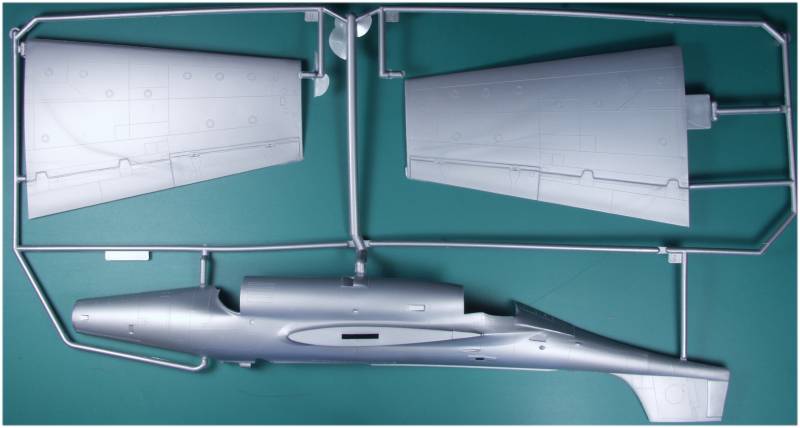
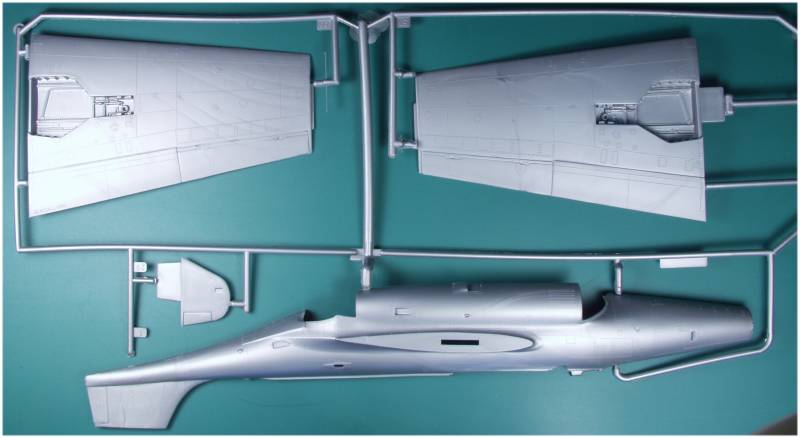
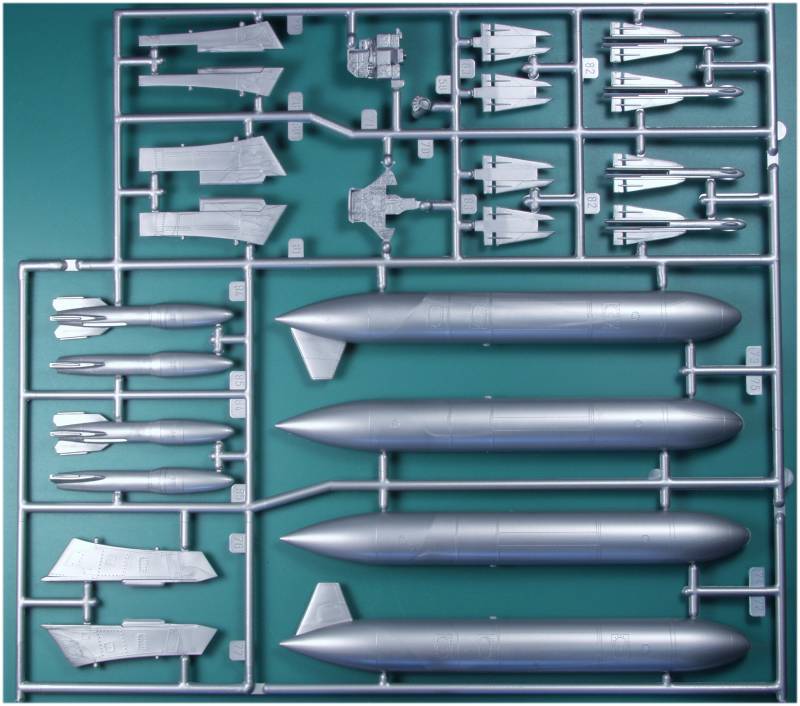
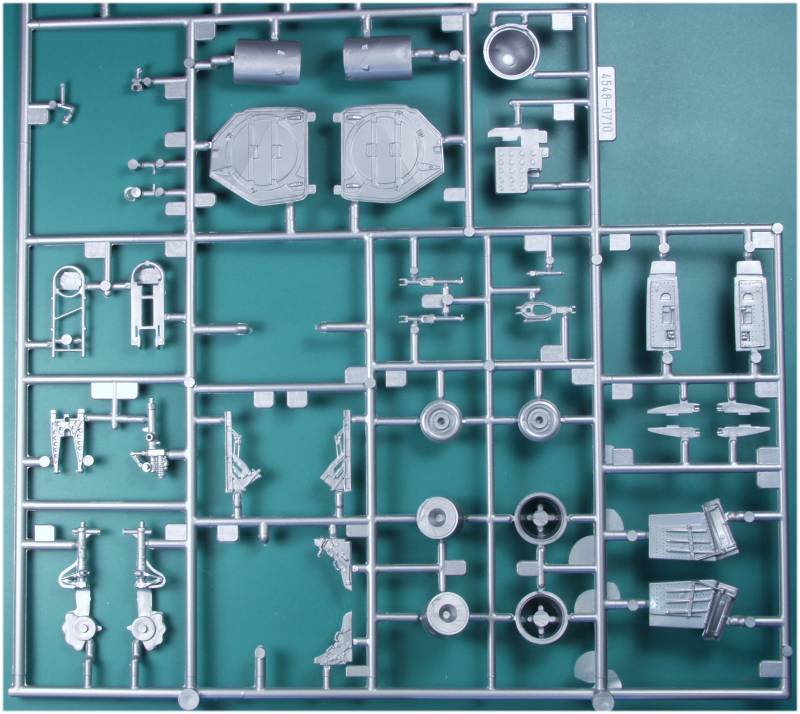
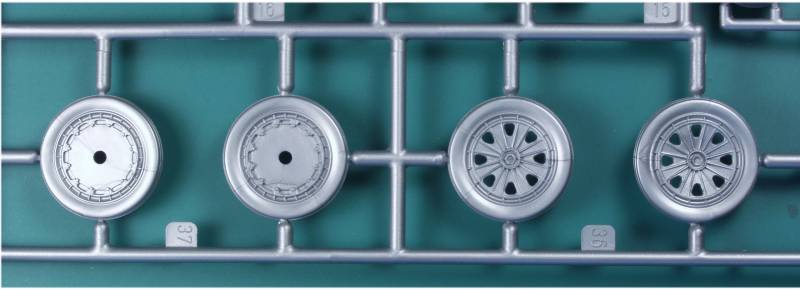
The clear parts are not bad, quite clear, reasonably thin with some optical distortion, more so on the between station blast shield. My canopy has a lot of scuff marks on the top that will need to be buffed down.
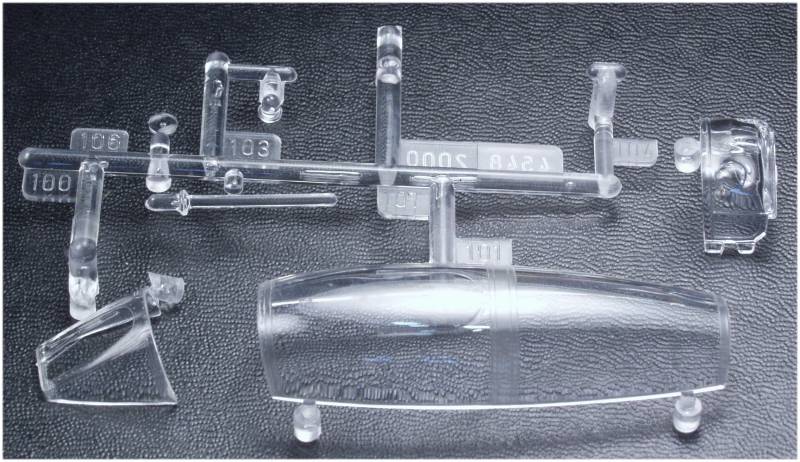
The decals in my kit were showing their age and may not be usable as the clear areas have badly yellowed. I may try sun bleaching them but I suspect I may need to find replacements which won't be easy as the after market folks have not been kind to this kit.
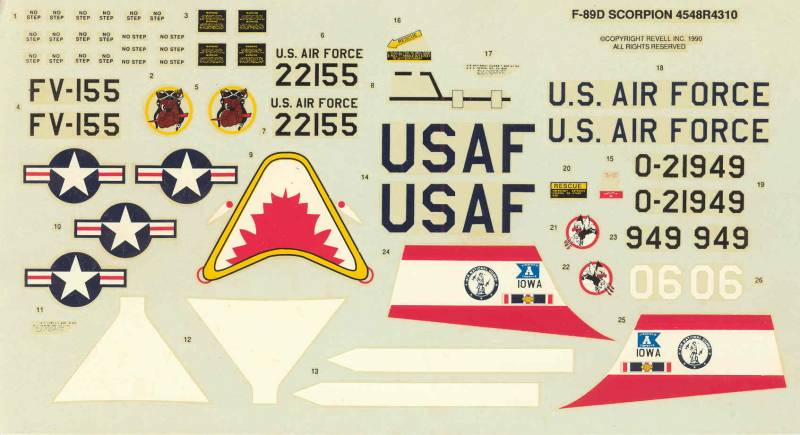
The instructions are a long page folded in quarters. The first section has history, icon chart, color chart given on generic names that are coded and used throughout the instructions. The assembly steps, 34 in all are spread out over the next four and a third pages with the balance being painting and decal position data.
After Market Goodies
The aforementioned SAC metal landing gear, True Details makes a replacement set of ejection seats for the J model but again they don't look to me to be that much better than the kit parts. Nothing else that I know about.
Conclusions
OK, this is an older kit with raised detail but like in so many cases until someone does a new one, it's the only game in town. I was primarily interested in it for its unusual looks and the fact it was a contemporary to the Cf-100 which I also have in the stash. The kit does have some fit issues and these are pretty well covered in the reviews that are linked below so I won't spend any time on them here. It is also out of production but can usually be found on ebay. Recommended to experienced modelers that are interested in building an F-89 in 1/48 scale.
Links to kit build or reviews
Build / reviews can be found here and here.
References
A good source for modeling purposes is Squadron's F-89 Scorpion Walk Around by Dennis M. Savage